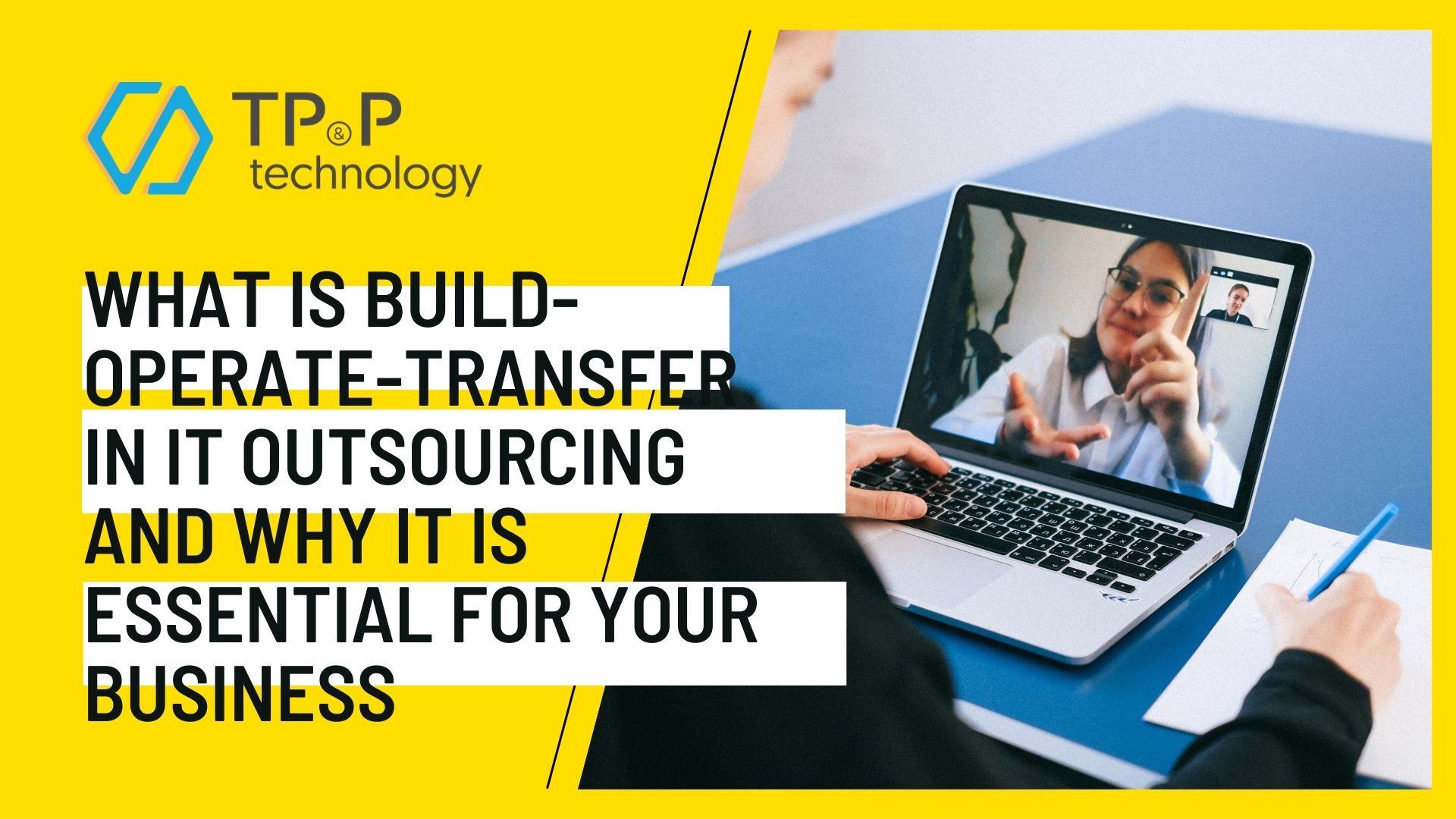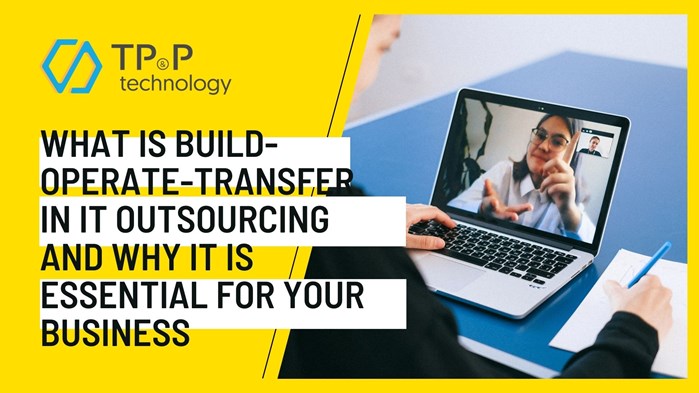
What Is Build-Operate-Transfer In IT Outsourcing And Why It Is Essential For Your Business
Unsurprisingly, in most Western and high-income regions, the software developers’ salaries are staggeringly high: there is a severe shortage of qualified development resources on the global scale. Companies of all sizes are increasingly flocking to any nearshore and offshore software outsourcing centers they can find.
According to Statista, the global IT outsourcing market was worth $375 billion in 2017 and has been growing significantly ever since. The 2019 Computer Economics survey also revealed that in 2019, the number of companies that choose to outsource their IT solution with the aim to reduce costs and enhance internal capabilities has reached 56 percent globally.
Although outsourcing software development is no longer a new trend, many companies still do not realize the possibilities that IT outsourcing can bring. They tend to think that their choices are limited to more well-known customer interaction models like dedicated delivery, or staff augmentation models. Although these arrangements are still great options for many companies, some businesses may find it difficult to apply based on the company’s strict regulations on security, intellectual property protection, and company product reliability.

So the question is: how can these companies benefit from IT outsourcing while maintaining the level of operational control required?
In some cases, especially those companies with large and long-term software development projects, it is best to adopt the Build-Operate-Transfer (BOT) model, sometimes also known as the BOT IT outsourcing engagement model. This model allows you to establish a nearshore or offshore software development team (subsidiary) for your organization in order to support your local IT outsourcing partner.
In this article, let’s delve right into the definition of the Build-Operate-Transfer engagement model’s concept, understand how this works, why it is important, and what problem it can solve!
What Does Build-Operate-Transfer Engagement Model Mean?
In order to better control operations and future expansion abroad, Gartner defined BOT as a contractual relation, where an organization hires a service provider to establish, optimize and operate an IT or business process service delivery operation with a contract, and the ultimate purpose to transfer the operation to the organization. BOT is a hybrid model that combines the build option and the buy option.
To simplify, despite the involvement of an external IT provider, the BOT software development arrangement simulates the relationship between you and your own overseas subsidiary. A software outsourcing partner can establish your offshore or onshore team to make the team reach a complete operational level, and then legally transfer the subsidiary to you after a certain amount of time. This model provides you with the cost and efficiency of traditional IT outsourcing while giving you the power to have full control over your own intellectual property and technologies.
How Does The BOT Engagement Model Work?
Normally, it takes around three years for the BOT service providers to complete the setup and transfer of fully operated IT subsidiaries onshore or offshore IT subsidiaries. The process consists of three main stages:
1. Build Phase: In this phase, the BOT service provider starts off with an in-depth analysis of your specific needs. The software outsourcing partners will try to understand as much as possible about your business goals, projects, technical requirements, as well as company culture. Once they fully comprehend what your business is all about and know what you need exactly, your outsourcing partner will find and secure talents, dedicated office space, equipment and technology needed to implement your software development project. Generally, this stage can be completed within 2 to 3 months of time.2. Operate stage: In this stage, your IT outsourcing provider will manage all daily activities related to the project based on your project’s requirements and goals. They will also keep you updated on the progress, including daily, weekly, monthly, and quarterly communication, as well as other reports related to the project. This stage usually takes up to 1 to 2 years to establish a stable and fully functional development team.
3. Transfer stage: At this point, your fully functional development team is ready to be legally transferred as a subsidiary of your organization. The outsourcing partner must transfer all of the operations, including the intellectual property, employees, knowledge base, and other assets.
In short, your IT outsourcing partner must:
- Prepare and procure office space and necessary equipment.
- Legal business registration in a foreign country.
- Recruit, hire, and train employees.
- Establish communication and technology infrastructure.
- Make sure compliance with the selected methods for the project.
- Plan for the future transfer.
- Cooperate between different offices or geographical areas.
Now that we have understood what BOT is and how it works in an IT outsourcing engagement model, let’s explore how BOT can help organizations to reap the benefit.
How BOT Can Help Organizations To Reap The Benefit
Because the BOT engagement model is designed to build a fully operational development centre, which will be legally transferred to your organization after a specific period of time. Meaning you have the legal right to use the knowledge base, intellectual property, all assets including infrastructure. You will also inherit a well-coordinated team of professionals who have proven their worth as it relates to your project and business needs. This can save you from the hassle of having to find, train, recruit, onboard, etc the whole team all by yourself.
This is the difference between BOT and Dedicated Team Engagement Model. After the project is finished, you are not likely to retain your outsourced software development team. However, if this is your initial intention, then a dedicated team engagement model is for you. Most IT outsourcing providers of dedicated teams are unable or unwilling to help you with registering a foreign subsidiary due to the knowledge shortage, or not being able to give up their talents.
The BOT engagement model also allows your team to connect closely and establish a strong relationship with your business, which has a positive impact on turnover, increases productivity and improves work quality. You will have the opportunity to train these talents and map out a clear career path within your company.
In general, the BOT engagement model offers the three obvious advantages:
- The possibility to procure all nearshore or offshore business activities and operations within agreed timeframes. Via the BOT, the contract guarantees that your outsourcing arrangement will become part of your business for the allotted time. Other business engagement models cannot ensure this.
- If your business needs change, you can flexibly use your offshore development team. BOT is very suitable for insourcing purposes. In short, BOT allows you to flexibly convert onshore or offshore teams to different projects or tasks as needed.
- Local knowledge is available. This is an important factor when you want to move your business overseas. The culture, laws, languages, or even how government agencies and companies vary from country to country. In this sense, relying on experienced local IT partners is one of the best ways to start a business in another country. Before acquiring all responsibilities for your overseas subsidiary yourself, you’ll have an opportunity to gradually get all the information you need in a controlled and almost risk-free manner.
Conclusion
The bottom line is: BOT is an engagement model that should be considered seriously by any organizations who are looking to build a long-term software development team nearshore or offshore. This model is for those who have to control strict data, intellectual property, etc.
TP&P Technology is among the top software development companies in Vietnam that have over 16 years of experience in providing Vietnam software outsourcing services. If you want to know more about our IT services, contact us now to talk to one of our business consultants.


